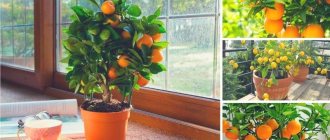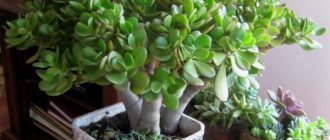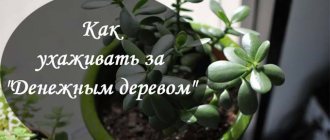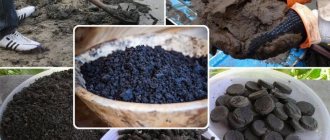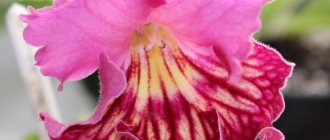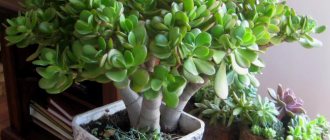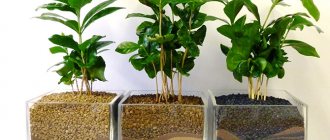Archaeologists have found that the olive tree has been grown at home by the inhabitants of the Mediterranean for more than ten thousand years, while it is not found in the wild in nature at all. Let's look at the possibility and ways to grow one of the oldest and most common plants on our own, references to which are found in the Bible and in the myths of ancient Greece.
Graceful olive trees are a symbol of peace and harmony. It is not surprising that they have found their place in modern home interiors. Olive seems to be specially created for lovers of not lush greenery and color, but for connoisseurs of muted natural sophistication.
Not requiring too much attention to its contents, the olive does not for nothing personify prosperity; it bears fruit and grows in conditions where most of its green fellows may not be able to stand it and give up. In indoor conditions, the tree will gratefully share its subtle pleasant aroma and even its fruits. However, such a stylish indoor plant is valued not so much for its Shrovetide fruits, but for its unusualness and exclusivity as an interior decoration.
Olive tree in the interior
How to choose an olive
If you have decided on the choice of such a home plant as the European olive or olea europaea, then you will have a number of priority questions as a breeder - where to get it, how to choose and how to grow an olive tree at home.
There are two ways to solve this problem:
1. You can grow an olive tree from seeds. The price for them in the store is very low and even the most economical gardener can afford them. Or, if possible, collect fresh green fruits directly from the tree in early autumn. Also, many tourists bring olive pits from trips to the Mediterranean coast.
Important! Do not take pickled fruit seeds from a jar as planting material. But the seed of a dried olive may well sprout.
Olive pits as an example of planting material
First of all, seeds collected by hand must be cleared of pulp. First, crush it with any object and soak the seed in warm water for several hours. To make it easier to clean the seeds from the pulp, as well as free germination of the embryo, it is recommended to soak the fruits in a weak alkali solution.
Feel free to throw away any olives that float, they are unsuitable as planting material.
Thoroughly clean the olive pit from any kind of pulp using a hard sponge, which is found in the kitchen of almost every housewife, or sandpaper. Please note that the bone has two completely different tips, one of which is sharp and the other is rounded. The next step is to form a hole at the blunt end of the bone. It is important not to completely cut off the tip, but only make a slight cut. Next, the seeds are again sent to warm water for another day.
After the seed kernels have dried, they are immersed in the soil to a depth of about 2 cm.
For your information! The germination percentage of Mediterranean plant seeds does not exceed 50%, therefore, in order not to be left without results, take the number of seeds in reserve.
The evergreen olive tree is a long-liver. Some specimens growing on the planet are more than 2000 years old. Consequently, it grows very slowly, which is why it can live with you as a pet for dozens of years. But here it is important to keep in mind that germination of a sprout from an olive seed will take up to 3 months. And in order to grow a domestic olive tree from a seed to a full-fledged young shoot, it will take about 2-3 years. Such an ornamental plant will begin to bear fruit after 10 years of your work and patience.
2. For those who want to strive not so much to grow a plant themselves, but to decorate their own home with a stylish living tree, it is recommended to purchase an already grown seedling in a special botanical nursery. The cost of such a specimen, of course, is several times higher than the cost of seeds, but the advantages of this method of starting an evergreen tree are also obvious.
You have the opportunity to choose olea europaea of the appropriate size. Make sure it is healthy and consult with a specialist regarding the specifics of caring for this particular specimen.
In addition, indoor olive will immediately become a full-fledged element of the decor of your room and will delight you with the first fruits in just a few months.
What is bonsai?
Very often the crop in our latitudes is grown exclusively for decorative purposes. Therefore, you can safely form a bonsai. The European olive has an irregularly shaped trunk and few branches bearing dense leaves with contrasting colors. In general, the plant is quite beautiful, interesting and perfect for forming into a bonsai.
Such a tree will decorate not only the room, but also the garden. According to reviews from knowledgeable gardeners, we can say that this plant is not very demanding to care for, and therefore you can safely start growing it at home, at least for decorative purposes.
Classification
In its homeland, olea europaea is classified based on the percentage of oil content in its fruits. The varieties classified as the oilseed group are the most oily. They are used for the production of olive oil. The fruits of the trees of the combined group are used for processing both oils and canning. The fruits of table tree species are suitable for growing only those olives that are eaten unprocessed.
The most popular groups of olive tree varieties among gardeners are European olive, Cape olive and golden-leaved olive.
For domestication, you can choose any of the mentioned crops, but most often the table olive variety is bred, for example, Askelano, Razzo, Sevillano, Mession and others.
Dwarf olive
Instead of an afterword
What is European olive? First of all, this is a wonderful, beautiful plant that produces wonderful fruits. In addition, it is used for decorative purposes to decorate the home and garden. If desired, European olive can be grown at home and even produce fruits. The tree is valued not only for its tasty fruits, but also for its medicinal properties, which have been known to people since ancient times.
European olives (Olea europea) are a type of evergreen tree belonging to the Oleaceae family. Historically, the olive tree is the oldest cultivated by humans and one of the most cold-resistant plant species of this type. In human culture (not only culinary and agricultural), the plant plays an important role.
What does an olive tree look like in interiors?
A homemade evergreen olive tree will decorate almost any interior with its grace. It will fit perfectly into the Mediterranean style of the interior, as this is its native element. Combine it with wicker baskets, natural fabrics or wooden furniture.
Wood will look great in Scandinavian-style rooms against a gray and white color scheme.
There is practically no style in interior design where olive would look out of place. It does not stand out with a riot of color and does not draw attention to itself, but gracefully complements the harmony of the interior space and fills it with a lively atmosphere. You can verify this by looking at the photo.
Olive tree in the living room
European olive in the interior
Olive tree on the windowsill
Olive tree in a large pot
Olive in a wicker pot
Placement of olive tree in the room
Olive trees in Russia, history of cultivation
Greek colonists began cultivating olives in the Caucasus back in the 8th century.
Disputes about when and by whom the olive was brought to the Caucasus continue to this day, however, there is an assumption that the first olive tree seedlings appeared in our latitudes from Asia Minor, which suggests the origin of the olive in the Caucasus, earlier than in Greece . The desolation of the ancient colonies of the Greeks led to the fact that olive gardens ceased to exist until the 15th century, and only with the arrival of the colonizers of Genoa, a new rise in the cultivation of the olive tree and the establishment of production of olive products began. Subsequently, the olive was displaced from the southern latitudes by viticulture. Today olive is found throughout the Black Sea coast of the Krasnodar Territory.
Olive trees in Russia are also grown in Crimea; they are found on the peninsula, adding zest to the local southern flavor. For the production of oil on an industrial scale, olives are not grown in our country due to difficult climatic conditions.
How to grow an indoor olive tree
The centuries-old history of growing olive trees has developed a fairly strong immunity in the plant, and therefore, we can say that the cause of any complications during its maintenance is a violation of the conditions of the latter. If you follow the simple rules of watering, fertilizing and replanting, you will avoid most plant diseases.
To successfully grow olives, you need to remember a few basic points:
- The soil for olive trees should not be too acidic. If you do not know how to make suitable soil yourself from compost, sand, turf and leaf soil, peat and lime, then feel free to buy a ready-made mixture in specialized stores.
- Remember that the olive’s homeland is a subtropical climate, which means there should be enough lighting for the plant, especially a young one. However, with prolonged exposure to direct sunlight and insufficient watering, the leaves of the tree may dry out and fall off. It is important to maintain balance here.
- Despite the southern nature of the olive tree, the room temperature does not always have to be extremely hot. In the summer, the tree feels quite good at +20 degrees and above, while in winter, during the dormant period, you can place it indoors, where the numbers on the thermometer are around +10...+12. Such a change in conditions will contribute to the rest of the plant, and therefore more abundant spring flowering for your pet.
- The indoor olive tree is very drought tolerant, but this does not mean that it should be dried out unnecessarily. Sufficiently abundant watering twice a week to the entire depth of the pot is required, as is periodic sprinkling. However, remember that excessive moisture is likely to negatively affect the root system. Which can even lead to the death of the plant. Therefore, this is a reason to establish good drainage in the growing container.
- In spring, the olive needs to be fertilized; the plant needs proper and timely feeding. Therefore, fertilizing with mineral preparations and organic matter will not be superfluous. As well as spraying foliage with succinic acid.
- Keep an eye on the appearance of the plant. Olive trees require regular pruning in indoor conditions. Once a year, remove weak branches or those that grow inside the bush with pruning shears, shape the crown of the olive, guided by your taste and style.
Possible problems
Problems and diseases
It is very important to monitor the development of the fruit crop and follow basic rules of care so that you don’t have to “save” it, but even the most experienced gardener sometimes has minor troubles with olives, for example:
| Problem | Cause | Solution |
| Leaves turn yellow and fall off | Dry soil | Systematic watering of the plant |
| Slowdown in growth | Bay of soil | If the process of root rotting has begun, then you need to remove all affected areas of the roots and replant the plant |
| Sudden death of branches | Verticillosis (fungal disease) | All damaged areas must be removed immediately, otherwise the plant will die. |
Yellowing of leaves
Pests
The olive tree is not prone to pest damage, but sometimes the plant is attacked by insects such as whiteflies, olive moths, mealybugs and eusofera.
Signs of pests
To combat these pests, you can use natural or specific insecticides, but it is better to maintain the plant’s immunity in advance so as not to subject the tree to chemical treatments. Frequent showers and high humidity in the room help prevent pests from attacking the plant.
Transfer
You should also take care of your olive tree by replanting the plant in a timely manner. Like a child growing out of clothes, an olive also needs a container of the right size.
Typically, the transplant procedure is carried out every two to three years. The diameter of the new container should be 5-10 cm larger than the previous one. Remember about the above-mentioned waterlogging of the soil, and therefore prevent it by laying special drainage materials at the bottom of the flowerpot. Be careful with the olive root system, it does not like such interference, and therefore the tree is transplanted by transshipment.
Important! If, when transplanting an olive tree, you find diseased, rotting roots, be sure to cut them off and treat them with activated carbon.
Purchase and adaptation
The olive tree has long complemented indoor interiors; you can grow it yourself from seeds or buy it at a botanical store, but when purchasing, you should immediately inspect the plant for the presence of pests and diseases. It is best to choose seedlings that are more than a year old ; their root system is already formed and they will adapt to new conditions much easier.
The olive tree needs to be insulated at the time of transportation in the cold season. You should start replanting the tree no earlier than a month after purchase. For planting, a medium-sized pot is needed so that the root system can grow freely, and the soil must be fine-grained and fairly loose; the plant does not tolerate waterlogged soil.
Important conditions without which the harvest cannot be harvested
Of course, they start a homemade olive tree not for the purpose of harvesting a large harvest, but the presence of fruits, firstly, greatly decorates the tree itself, and secondly, it pleases the owner, as a sign that his efforts and labors in maintaining the plant are not in vain.
A dwarf olive can give its owner about 600 grams of fruit in a successful season. This is no more than 20 olives. A full-fledged tree will allow you to harvest about 2-3 kg of harvest from it.
Dwarf olive with fruits
In order to grow a fruit-bearing olive tree, you will need to follow some subtleties.
- Remember that, firstly, the time of the first fruiting directly depends on the method in which you grew the tree.
Let us remind you that a tree grown from a seed will begin to bear fruit only at 10 years of age. A seedling grown from a one-year-old cutting will bear fruit in 2-4 years.
In addition, there are types of olive trees that, regardless of the method of cultivation, produce the first harvest after as many as 10 years. Check all the properties of the planting material before purchasing it so as not to be disappointed in the plant and the result of its maintenance.
- An important condition for fruiting is the correct temperature regime of the tree. If the plant lives all year round at a constant room temperature above 20 degrees, then you shouldn’t count on a lush flower, and, therefore, a bountiful harvest.
- The olive is a dioecious species, which means it must have male and female cells to produce fruit. In nature, plant pollination is carried out by wind. At home, you will have to help in this process with the help of available materials, for example, a brush or regular shaking of flowering twigs.
If you observe such small but significant nuances, the olive tree will definitely answer you with gratitude and delight you with the first fruits.
This is interesting! Despite many attempts to plant olives in the natural environment or in one’s own garden in latitudes far from the Mediterranean, such experiments have never resulted in successful fruiting. Olive cannot tolerate temperatures below -5 degrees. Whereas it was indoor or greenhouse cultivation of an olive tree at home that gave the most beneficial results and has long been no longer something surprising.
The first fruits of the olive
Brief description of care
The growth and development of an olive tree is influenced by many factors: temperature, lighting and air humidity, frequency of watering and fertilizing, season and others. The plant is completely picky, but it is still necessary to follow the basic rules for caring for this crop:
- Temperature. The olive tree is quite heat-loving, but at the same time cold-resistant; in home cultivation, room temperature +18…+23℃ is suitable for it. In winter, the plant must be provided with a temperature of at least +10℃.
- Air humidity. The plant must be provided with a room with moist air; dry air is detrimental to the decorative qualities of the tree. To help the plant survive hot days, it is necessary to systematically spray the leaves.
- Lighting. The plant is a light-loving plant, so a shaded place is not suitable for it. It is necessary to provide the olive tree with good illumination all year round; in winter, you can use an additional fluorescent lamp.
- Watering. The olive tree needs systematic watering; it must be watered after the top layer of soil has dried out. It is necessary to avoid stagnation of moisture in the soil; excess water is immediately poured out of the pan.
- The soil. The soil for the plant is loose and nutritious; the ideal option would be a mixture of garden soil, turf soil, sand and peat. Sometimes lime is added to the soil so that the soil is not acidic for the plant.
- Trimming. Most often, pruning of an olive tree is carried out for decorative purposes - to give the tree a beautiful shape. The procedure is carried out in the spring; it is necessary to shorten long branches and trim old and weak ones.
- Periods of dormancy and flowering. The olive's dormant period occurs in the winter months, and the flowering period (active growth) begins in March and ends in August. The plant blooms and bears fruit no earlier than 3 years after planting.
- Feeding. It is necessary to feed the olive tree 2 times a month - from March to August. The procedure is carried out using nitrogen-containing preparations.
- Transfer. The plant is replanted using the transshipment method so as not to injure its root system. A young plant is replanted every year, from 5 years old - once every 2-4 years.
Caring for a flowering plant
Caring for an olive tree at home necessarily includes a process that is also associated with the flowering of the plant.
Olive blooming
The graceful olive tree blooms with yellowish-white flowers. Olive flowers are small and collected in clusters, like lilac or jasmine, and bloom once every two years in late autumn. The aroma is subtle and refined. A homemade olive can stand decorated with flowers for several months.
During the flowering period, the olive is quite scrupulous about watering. Despite the fact that its inflorescences are not afraid of irrigation and even sprinkling, it is waterlogging of the soil at this time that can lead to disease or even death of the tree. Water this houseplant only when the top of the soil is dry and not as much as at other times.
In addition, a flowering indoor olive tree is in dire need of light. Therefore, if it is cloudy outside and there is not enough natural light, you need to artificially illuminate the olive plant.
Also, don’t forget to help the tree cross-pollinate its flowers every day. In nature, this happens with the help of the wind, but in indoor conditions the plant cannot cope on its own; do not be afraid to help it in this process by shaking the branches.
Remember that the quality and productivity of your pet depends on the care and proper care of the olive tree at this particular time.
Varieties
How to grow mangoes from seeds at home
There are more than two hundred varieties of olives, most of them created by breeders to increase yield and increase resistance to cold. There are two types according to the scope of application:
Oily, for making olive oil.
Table fruits, characterized by large fruits and good taste, are used fresh for cooking and for canning.
The leader in the number of varieties grown is Greece. In this country, each region has its own type of olive, of which we note Chalkidiki and Kalamata. One of the most beloved in Russia is the Italian giant called Vittoria; its gastronomic qualities are so good that no additives are used for pickling.
Representatives of France, in particular Nyon and Picolini, as always, will delight gourmets with a sophistication unlike other types, and will offer a piquant bitterness or a refreshing salty aftertaste.
Spanish varieties are rightfully considered the best for canning. They have soft, pliable flesh, and separating the pit is not a problem. This country is also the leader in total volumes of olive cultivation and exports.
- What work needs to be done in the fall to prepare fruit trees for winter
- Planting and replanting trees in autumn: recommendations from experienced gardeners
- What are the benefits of pomegranate for health and immunity?
Proper lighting for European olive
Growing naturally on loamy, sandy and rocky soils under the scorching sun, the European olive is a model of endurance. Therefore, the indoor conditions for this tree are quite comfortable. But with some reservations. For example, direct sunlight for an olive tree will be clearly too much. It is better if the rays of the sun falling on the plant are diffused. Otherwise, the delicate leaves are at risk of burning, the consequences of which will take a long time to get rid of. Young trees will tolerate staying near southern windows well, but mature olive trees are better placed near eastern and western windows.
Benefits of wood
Olive wood is decorative and has high technical characteristics. Its greenish-yellow coloring is very popular. Olive color is a classic color, widely used in room decorations and fabrics around the world. Olives are not straight-trunked; they have many lateral branches. Crooked areas and the impossibility of making even boards make the wood unsuitable for the construction industry. But its high strength, density, hardness, durability, as well as its unique natural pattern make it possible to use it for the production of furniture, various carpentry products, small wooden parts, souvenirs, and inlays.
The fruits are of particular value. They contain:
- vitamins B, C, A, E;
- organic acids;
- saponins;
- potassium, phosphorus, iron;
Is it possible to grow a tree from a seed?
Typically, an olive tree is not grown for its berries, but with proper care it will begin to bear fruit. First, the plant develops, long stems with narrow, beautiful petals appear. If you maintain optimal conditions for its existence, the plant will soon begin to bloom.
An olive can even be grown from a seed, but to do this you need to create ideal conditions for its existence. Before planting, it is soaked in a 10% alkali solution for 18 hours. The liquid eats away the hard crust, from which a sprout will soon appear. Next, the plant requires constant care.
Which varieties are suitable for indoor growing?
Growing olives in pots is used for indoor decoration. To do this, it is worth choosing European varieties, which are distinguished by their miniature sizes.
Crimean
This is a wonderful variety that grows naturally in Crimea. It has excellent decorative properties.
Nikitskaya
Under natural conditions, the tree grows on the southern coast of Crimea. This plant is perfect for growing at home.
Urtinskaya
Another good variety that has excellent taste. It is grown at home for the purpose of room decoration.
Askelano
This is a Spanish variety that is loved by many gardeners. It has dark green leaves and tasty fruits.
Messiah
This tree is characterized by medium-sized fruits. They are distinguished by their oval shape and universal purpose.
Sevillano
This is a Spanish large-fruited variety. When grown under natural conditions, the weight of the fruit reaches 10-12 grams.
Coreggialo
This variety is characterized by fairly small fruits. They are distinguished by their elongated oval shape and almost black tint.
Najviyskaya
This is a Georgian variety of olive tree. A characteristic feature of this plant is its high moisture requirement.
Benefits of wood
Olive wood is decorative and has high technical characteristics. Its greenish-yellow coloring is very popular. Olive color is a classic color, widely used in room decorations and fabrics around the world. Olives are not straight-trunked; they have many lateral branches. Crooked areas and the impossibility of making even boards make the wood unsuitable for the construction industry. But its high strength, density, hardness, durability, as well as its unique natural pattern make it possible to use it for the production of furniture, various carpentry products, small wooden parts, souvenirs, and inlays.
The fruits are of particular value. They contain:
- vitamins B, C, A, E;
- organic acids;
- saponins;
- potassium, phosphorus, iron;
Bait and watering
In order for the olive to begin to bear fruit soon, it needs proper nutrition. Fertilizers are usually added along with watering; dosages are prescribed on the packaging depending on the brand. If you use soil with low acidity, it is better to add a little lime to the bait. When using living compost, it must be diluted with water.
Olive does not like heavy rainfall, so you need to carefully monitor the dosage. It is better to install drainage in the pot or buy a flowerpot with automatic watering. If you notice wet soil, the tree needs to be urgently transplanted into new soil and put on a “starvation diet” for 2-3 days.
